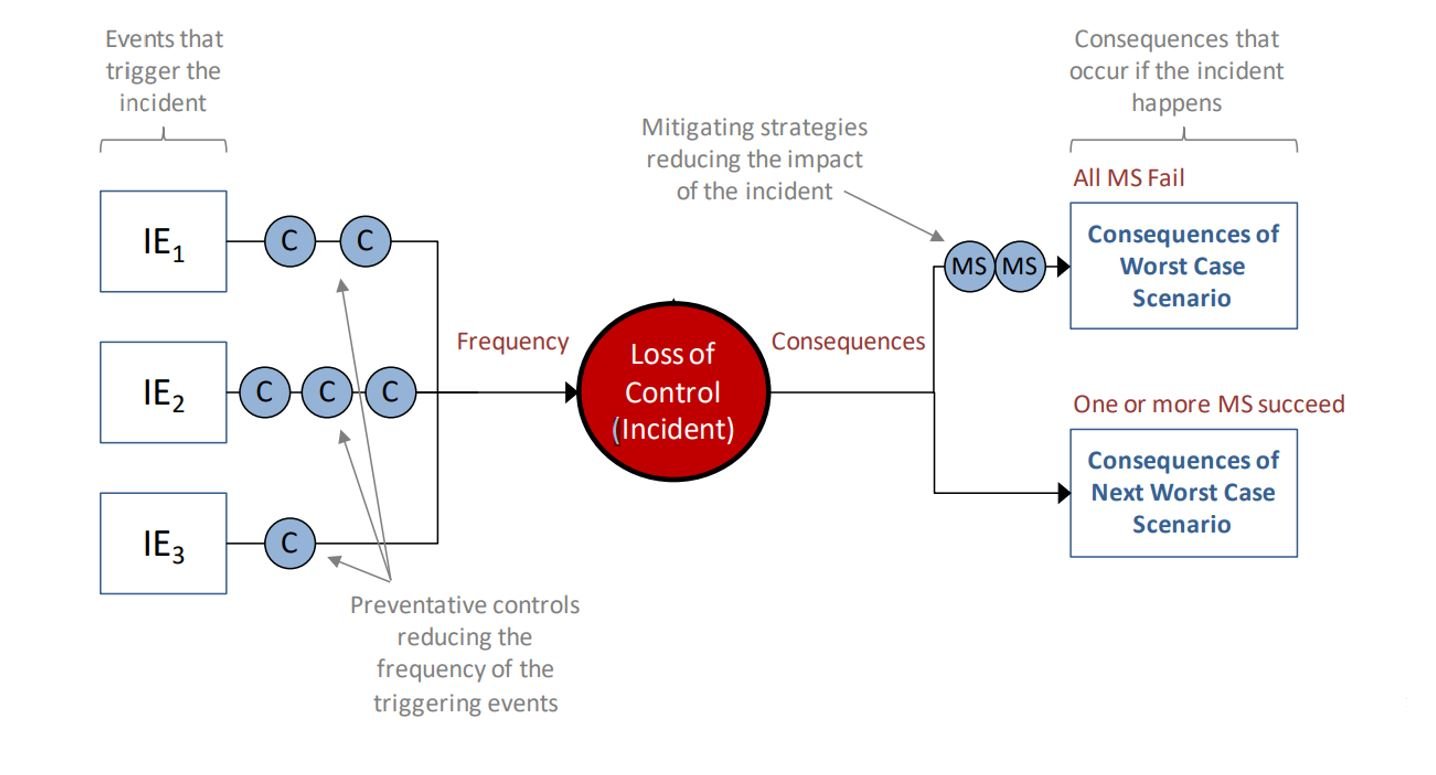Managing major mining risks using bow-tie analysis
This article is an edited excerpt of a paper presented at AusIMM’s Minesafe International Conference 2022.

Introduction
Bow-tie analysis is a commonly used tool in heavy industries such as mining to identify, display and control risks that have the potential to pose serious harm to personnel. It is a simple but powerful risk management tool that displays traditional risk assessment outputs as easily interpreted ‘bow-tie diagrams’. These can be applied to any type of risk (eg safety, environmental, assets etc) and as such show great benefit in managing operational hazards in mining.
Bow-tie diagrams
A bow-tie diagram is a pictorial representation of a risk assessment for a given hazardous scenario. It shows the links between causes (IE), controls and consequences. A basic bow-tie diagram is shown in Figure 1.

The centre of the bow-tie is defined as the ‘loss of control’ event, where energy has been released and the event is irreversible. Causes leading to, and consequences resulting from, the loss of control event are listed on the left and right sides respectively.
Multiple causes and consequences can be listed on a single diagram to provide an overall view of the scenario. Relevant controls to prevent and mitigate the scenario are added to each cause and consequence line, respectively. Bow-tie diagrams provide a risk model of the scenario by applying traditional risk assessment data (eg cause likelihood, consequence severity) to estimate a final risk rating for each consequence. As such, the model can be as simple or as complex as required.
Generally, bow-tie analysis is used for high consequence, low likelihood scenarios where a greater understanding and management strategy is needed. For the mining industry, bow-tie diagrams could be used to analyse and manage ‘major mining hazards’, such as underground explosions, where consequences can escalate quickly.
Benefits of bow-tie analysis
The main benefit of bow-tie diagrams is their simplicity in communicating an array of information regarding major hazard scenarios. This information can be used for:
- Understanding the overall site risk profile through risk ranking of major hazard scenarios.
- Identification of highest risk contributors to major hazards for targeted risk reduction actions.
- Risk-based prioritisation of actions from bow-tie risk ratings.
- Clear communication of risk information to the workforce (eg importance of controls, hazards awareness etc).
- Scenario based auditing to test performance of controls.
To achieve these benefits, the bow-ties must be integrated into operational processes and the safety management system, making them familiar and ‘living’ documents.
Case study – Latrobe Valley coal mine
The bow-tie analysis technique and benefits can be demonstrated through a case study of the ‘major mining hazards’ in a Victorian open cut coal mine. The project involved hazard identification, risk assessment and control identification using bow-tie analysis. The hazard identification and risk assessment workshops were an engaging activity that involved technical and operations personnel, thus providing a platform for consultation in the risk management process. The final bow-tie diagrams were then used to demonstrate adequate risk management to the regulator. The bow-ties were ‘operationalised’ as a tool to:
- target maintenance of controls
- prioritise actions/projects based on risk
- provide risk awareness training to the workforce
- develop performance standards and key performance indicators on controls and supporting systems (ie the safety management system)
- develop audits/performance monitoring activities on scenarios.
An example of the operational application was the completion of control assurance audits for the controls identified on the ‘bushfire’ bow-tie as part of bushfire season preparations. The bow-tie allowed the audit to be easily developed as the important controls were clearly identified along with supporting reference information and control performance requirements. When performing the audit, the interviews and analysis were able to be targeted at the specific function of the control in relation to the cause rather than a generic review.
Through engagement in the bow-tie workshop process, personnel from across the business gained a better sense of risks and controls within their work functions. This is a very useful consultation exercise to promote the desired safety culture of the organisation.
Readers can purchase and download the full paper as part of the Minesafe International Conference 2022 proceedings here.
Reference
Center for Chemical Process Safety (CCPS), 2015. Guidelines for Initiating Events and Independent Protection Layers in Layer of Protection Analysis, Wiley: New Jersey